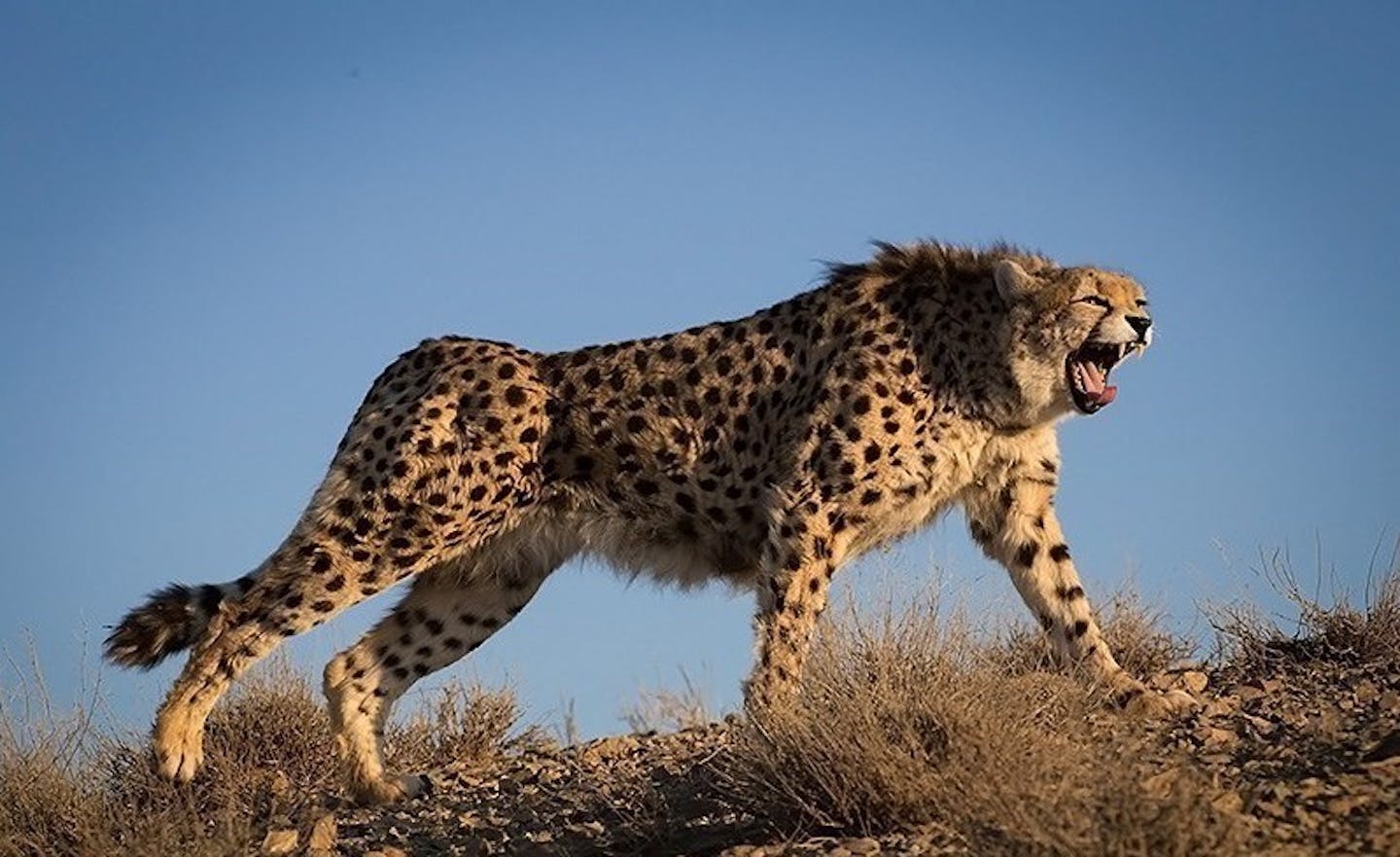Asiatic cheetah: Apex predators helping life thrive in the desert
- Nature Conservation
- Land Conservation
- Iconic Species
- Wildlife
- Mammals
- Persian Deserts & Forests
- Central Eurasia Realm
One Earth’s “Species of the Week” series highlights an iconic species that represents the unique biogeography of each of the 185 bioregions of the Earth.
Beneath the scorching sun, dunes of golden sand sway in the Iranian desert. Temperatures here can reach 70℃ (158℉) and make the rugged rock formations scattered throughout this landscape shimmer in the distance.
Yet, despite this arid and parched climate, biodiversity prospers. The apex predator of this ecosystem is also the most surprising—the Asiatic cheetah (Acinonyx jubatus venaticus).

Asiatic cheetahs are the iconic species of the Persian Deserts & Mountain Woodlands Bioregion (PA29), located in the Persian Deserts & Forests subrealm in Central Eurasia.
Ancient origins and distinct features
Research from a five-year genetics study found that Asiatic cheetahs split from the African cheetah between 32,000 and 67,000 years ago. Compared to African cheetahs, the Asiatic cheetah is smaller but has a thicker coat, a more powerful neck, and slender legs. Many believe that they could be faster than the African species with longer legs, but no tests have confirmed this theory.
Masters of speed
An adult Asiatic cheetah grows to about 1.3 meters (4.4 ft) in length and can weigh up to 54 kilograms (119 lb.). Like their African cousins, Asiatic cheetahs can reach sprinting speeds of up to 128 kilometers per hour (80 mph) to catch their prey.
Balancing the health of their ecosystem
Their diet consists of medium-sized herbivores such as Indian gazelles, Cape hares, and wild sheep and goats. Each of these species are vigorous grazers, and cheetahs aid in balancing their populations so the minimal vegetation that grows in the desert isn’t completely wiped out.

The Asiatic cheetah (Acinonyx jubatus venaticus). Image Credit: N. Farid, Envato.
A decline across historical ranges
Once, the Asiatic cheetah roamed the entire Arabian Peninsula, across the Middle East, and into India. They’ve been nearly driven to extinction by poaching, habitat degradation, and scarcity of food due to overhunting. Since breeding success depends on prey availability, Asiatic cheetahs have been caught in a negative feedback loop of diminishing populations. A mere 50 individuals were thought to be alive in the wild in December 2017.
A cultural symbol ignites conservation
The low population report caused a conservation wake-up call for many Iranians, as the Asiatic cheetah is a cultural symbol of power and strength. Partnering with the Wildlife Conservation Society and the United Nations Development Program, Iran’s Department of the Environment (DOE) created a comprehensive protection program.
The project includes safeguarding territories, constructing wildlife crossings to reduce the number of deaths in traffic accidents, and working with local communities to raise awareness of the importance of the species.
Optimism for the future
Most Asiatic cheetahs now live in five protected areas, viz Kavir National Park, Touran National Park, Bafq Protected Area, Dar-e Anjir Wildlife Refuge, and Naybandan Wildlife Reserve. Estimates show that there are currently between 70–110 individuals in the wild.
Although it is a gradual increase, it is nonetheless a successful conservation story in the making. Environmental activists and scientists alike are optimistic the Asiatic cheetah will rule the Persian desert again.
Support Nature Conservation

_female_CC-Charles%20Sharp-2014_resized.jpg?auto=compress%2Cformat&h=600&w=600)
.jpg?auto=compress%2Cformat&h=600&w=600)

